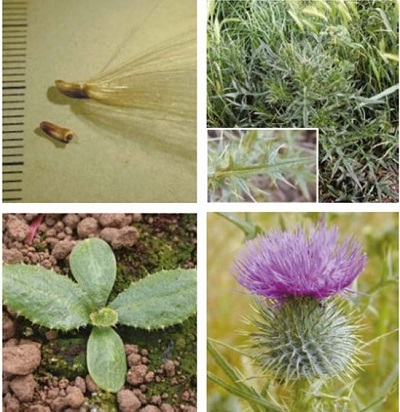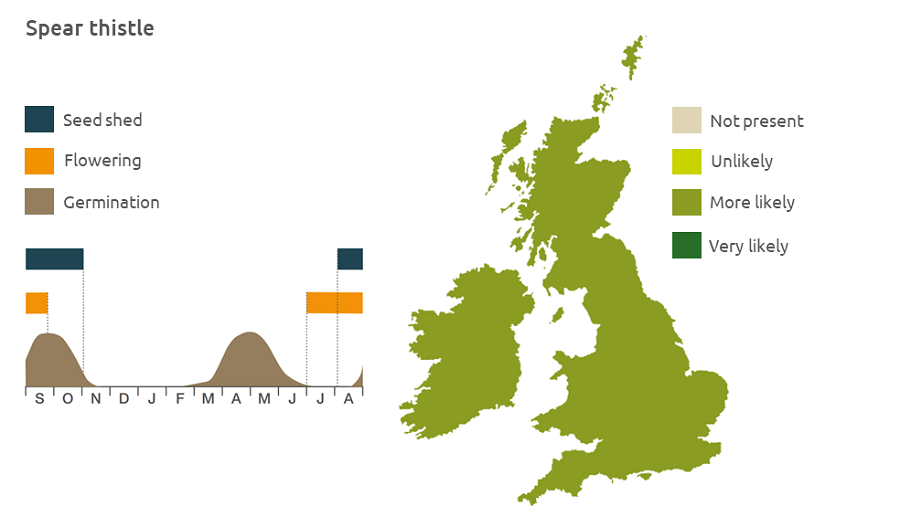- Home
- Knowledge library
- Distribution and biology of spear thistle in the UK
Distribution and biology of spear thistle in the UK
Spear thistle is found throughout the UK and is common in arable fields. Find out how to identify and control this broad-leaved weed.
Overview
Spear thistle (Cirsium vulgare) is common in arable fields. The plant dies in the autumn after flowering. It reproduces only from seeds, which have little dormancy and germinate in autumn or spring; the immature plants can overwinter as a rosette. Most of the seeds (up to 93%) are eaten by birds or small mammals.
- It is particularly competitive in winter oilseed rape and spring crops
- It has value to biodiversity
Description
It is a biennial dicotyledon, usually 30–150 cm tall, though occasionally taller. It is very spiny and has a very deep tap root. The thistle flowers are reddish purple and usually occur singly on the flower stalk.
Key features
Plants: The stems have spiny wings and the young leaves have a hairy upper surface.
Lookalikes
Spear thistle may be confused with creeping thistle; the young plants of thistles are often difficult to tell apart. Spear thistle has a large and densely hairy leaf second, creeping thistle has fewer marginal spines.

Location and life cycle

Geographic distribution
Spear thistle is found all over the British Isles up to an altitude of 850 m, in many habitats including hedgerows, field margins pastures and arable fields.
Soil type
It prefers fertile and well-drained disturbed soils.
Seed statistics
- Seed longevity: >5 years
- Seed weight: 2.5 mg
- Seeds/head or capsule: 100
- Seeds/plant: 8,000
Management
Being a biennial, it does not persist in arable rotations or routinely cultivated soils, but is encouraged by fallow or grass breaks or perennial crops. Seedlings are controlled by harrowing. Established plants are not easily controlled by mechanical means.
For advice on herbicides, please speak with your agronomist or adviser.
When was this information last updated?
This page is based on content from the encyclopaedia of arable weeds publication. Since it was first released in 2008, the publication has been redesigned several times but not revised. However, it remains a good foundation for general information on the distribution and biology of weeds.

